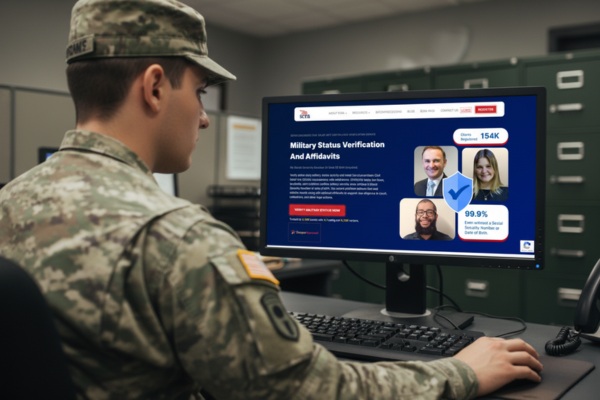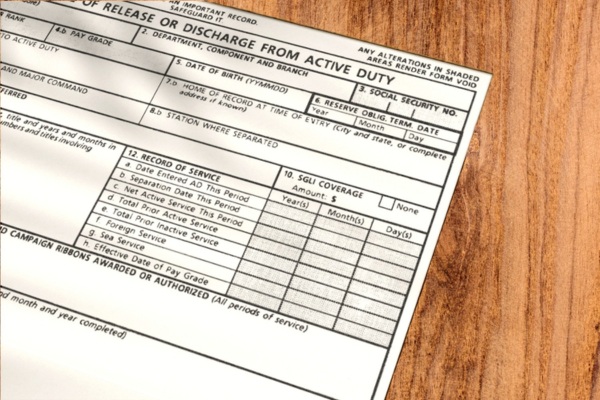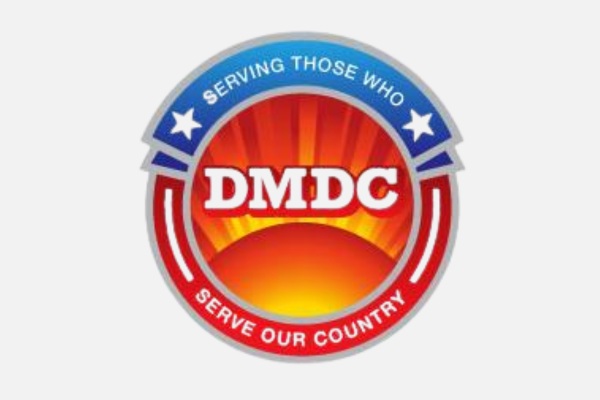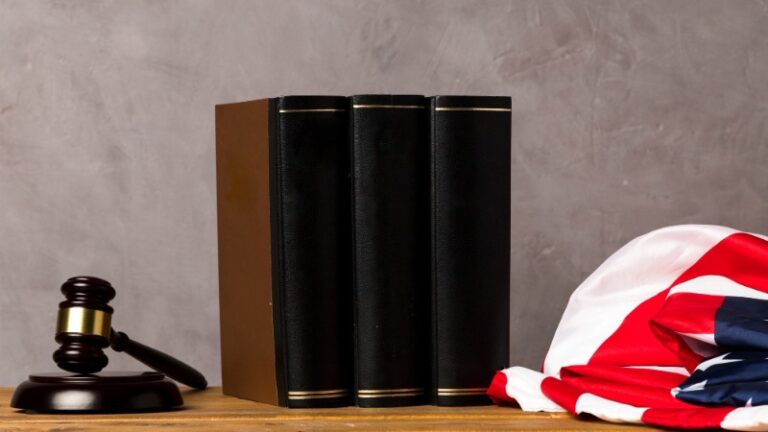How Do Employers Verify Military Service? Examples & Legal Steps
Many employers look beyond skills and education when evaluating applicants, focusing closely on a person’s background. Since resumes can be stretched to appear more impressive than reality, it’s common for companies to double-check claims, especially those involving military service.
Hiring servicemembers or military veterans can bring unmatched discipline, leadership, and practical skills into the workplace. Yet, verifying service is not just about finding the best candidate.
Some employers must confirm military records to comply with federal requirements like VEVRAA, while others do it to ensure veteran preference in hiring is awarded fairly. There have even been cases of forged DD214 forms or false claims of service, proving how serious verification really is.
The question that follows is simple but critical: how do employers verify military service, and what steps ensure accuracy, speed, and compliance?
Contents
- 1 Verified Methods to Check Military Service
- 1.1 1. Use the SCRACVS Military Verification Service
- 1.2 2. Request the DD214 Form from the Candidate
- 1.3 3. Verify Status via the Defense Manpower Data Center (DMDC)
- 1.4 4. Use the National Archives or VA Record Access
- 1.5 5. Try Private Background Check Services
- 1.6 6. Accept Alternative or Supplemental Documentation
- 2 Legal & Privacy Considerations
- 3 Why SCRACVS Is the Smartest Option?
- 4 FAQs
Verified Methods to Check Military Service
1. Use the SCRACVS Military Verification Service

One of the most reliable ways for employers to confirm a service member’s background is through the Servicemembers Civil Relief Act Centralized Verification Service (SCRACVS). This platform works directly with the Defense Manpower Data Center, the official federal source for military service verification.
Instead of waiting weeks for paper records, results are usually available within hours, which makes it highly practical during pre-employment screening.
Employers only need basic details such as a name with a Social Security number or birthdate, provided the applicant has given consent. Once submitted, SCRACVS produces accurate military service records that show active duty status and other details required for verification.
Unlike requesting DD214 forms from the National Personnel Records Center, this approach eliminates delays and reduces the risk of relying on incomplete or fraudulent paperwork.
Key benefits of SCRACVS include:
- Court-admissible affidavits accepted nationwide
- No need to directly contact the VA or handle DD214 release documents
- Secure, HIPAA and SCRA-compliant process
- Fast turnaround compared to manual requests
This method is especially useful for:
- Employers verifying active duty for SCRA compliance
- Government contractors or private companies tied to defense projects
- Organizations that need consistent background screening for military veterans
For example, a contractor working on a Department of Defense project may need to confirm whether a candidate is still on active duty or retired from the armed services. In these cases, having immediate access to verified documentation through a secure service like SCRACVS ensures compliance while saving valuable time.
Employers who want to simplify this process can begin their verification online through the SCRACVS portal.
2. Request the DD214 Form from the Candidate

Another common way employers verify military service is by requesting the DD214 form directly from the candidate. Officially called the Certificate of Release or Discharge from Active Duty, this document is issued by the Department of Defense when a service member retires, separates, or is discharged.
Because it comes straight from the military branch, the DD214 is considered the standard proof of service.
A complete DD214 provides critical details, including:
- Branch of service
- Dates of service and length of time served
- Rank at the time of discharge
- Type of discharge, such as honorable or general
- Awards, citations, and notable assignments
For employers, reviewing a DD214 goes beyond confirming dates. It can validate information on a candidate’s resume, reveal a service member’s discharge status, and confirm eligibility for veteran preference in hiring.
But since this form is often required in important decisions, it is crucial to check its authenticity.
Employers should:
- Review the formatting and official structure of the document
- Compare the listed details against what the applicant has provided
- Be alert for red flags such as altered text, missing sections, or blurred stamps that suggest tampering
To reduce this risk, many employers compare submitted forms with sample records available through the National Archives. This extra step ensures the DD214 provided aligns with official standards and is not a fabricated copy.
3. Verify Status via the Defense Manpower Data Center (DMDC)

Employers also have the option of using the Defense Manpower Data Center, which maintains the federal database of active duty servicemembers.
Through its online SCRA portal, an employer can confirm whether a person is currently serving in the armed services. This is particularly useful in situations where proof of active duty is required for compliance with federal law.
The DMDC verification system is straightforward but limited. It only confirms current active duty status and does not provide a full history of service, discharge details, or awards. To use the system, employers must have:
- The candidate’s consent
- A Social Security number or date of birth to perform the search
Because the information is narrow in scope, it works best as a quick check rather than a complete background screening. For example, a landlord or lender may rely on DMDC to determine if a servicemember is on active duty before proceeding with legal action under the Servicemembers Civil Relief Act.
4. Use the National Archives or VA Record Access
Another way to verify military service is through the National Archives or the Department of Veterans Affairs. These agencies act as the central repository for military personnel records, and they allow veterans to request official documentation that can then be shared with employers.
Since employers cannot directly access these files, authorization from the candidate is always required.
Veterans can request:
- Replacement copies of the DD214 form
- Military service letters from the Department of Veterans Affairs
- Veteran Status Certification documents for benefits or hiring preference
This process is dependable, but it can take several days to weeks before documents are received.
For many employers, it works best in situations where time is less critical, such as long-term hiring or when an applicant needs certified copies of older records. More details on how veterans can request their documents are available at the National Archives.
5. Try Private Background Check Services

Some employers choose to work with private background screening companies that include military service verification as part of a broader investigation. These providers usually handle everything at once, from education and employment history to criminal checks, which can feel convenient for large organizations or roles that require high security clearance.
In most cases, the verification process still draws on official government sources such as the Defense Manpower Data Center or Department of Defense records. Providers may also review DD214 forms and cross-check information against public databases to confirm accuracy.
Since these checks involve sensitive personal details, a signed release from the candidate is always required before the search can be completed. Fees are common and often depend on the scope of the background investigation.
What many employers don’t realize is that these private providers often use the same government sources that direct verification platforms like SCRACVS rely on. By cutting out the middleman and using a specialized verification service, companies can often save time while still receiving accurate, court-admissible results.
6. Accept Alternative or Supplemental Documentation
In some situations, employers may rely on alternative records to confirm a candidate’s military background. These documents are not primary proof but can be helpful when a DD214 or verified report is not immediately available.
Employers might accept:
- A letter of verification from a military branch
- A Verification of Military Experience and Training (VMET) document
- Proof of enrollment in military education programs or benefits
These records should only be used as supplements, not replacements, for official discharge papers or authenticated verification through government sources. The VMET is especially useful for employers who want to see the technical training and qualifications a service member gained during their time in the armed services.
When reviewed alongside a DD214 or verified affidavit, these documents can provide a clearer picture of a candidate’s military experience.
Legal & Privacy Considerations
Employers must be careful when verifying a service member’s background, since strict privacy rules protect military records. Before accessing information through government databases or third-party verification platforms, written consent is always required.
Attempting to pull records without authorization can violate federal law and expose the employer to liability.
The type of information employers may request is also limited. Verification should be restricted to:
- Current service status
- Military branch
- Type of discharge (honorable, general, other than honorable)
Sensitive details, such as the reason for discharge or any disciplinary history, cannot legally be requested or used in hiring decisions. The Fair Credit Reporting Act (FCRA) and the Privacy Act apply to military service verification, ensuring that applicants’ personal information is handled securely and fairly.
Important to note
Employers should avoid asking questions about discharge reasons, combat history, or medical issues during interviews. These subjects are off-limits under federal privacy protections and can create serious legal exposure if raised.
Keeping the focus on lawful verification methods safeguards both the organization and the candidate.
Why SCRACVS Is the Smartest Option?
Verifying military service is not just another box to check during pre-employment screening. For many employers, it can affect hiring preference, government compliance, and even legal protections under the Servicemembers Civil Relief Act. While several methods exist, few offer the speed, security, and legal reliability that today’s organizations need.
SCRACVS streamlines the entire process by connecting directly to the Defense Manpower Data Center and returning results within hours. Employers receive court-admissible affidavits, secure access to both current and past service status, and the peace of mind that every step follows federal compliance standards.
Whether you are a large government contractor, a private company, or a law firm handling sensitive cases, relying on SCRACVS means avoiding delays, eliminating guesswork, and protecting your organization from risk. The smartest employers choose the path that saves time and ensures accuracy. You can do the same by starting your verification securely through SCRACVS Military Verification.
FAQs
Can employers verify military service without a DD214?
Yes, employers can verify military service without relying on a DD214. Other options include checking through the Defense Manpower Data Center, using a service like SCRACVS, or asking the candidate to provide records from the National Archives or the Department of Veterans Affairs. While the DD214 remains the most common proof of military discharge, employers can still confirm active duty status or past service through these official channels. Verification ensures accuracy in the hiring process and helps prevent false claims on a candidate’s resume.
Do employers need permission to verify military service?
Under the Privacy Act of 1974, employers must obtain written consent from the candidate before requesting or accessing military personnel records. Whether verification is performed through the National Personnel Records Center or a private background screening service, consent is a legal requirement. Most background check providers also require a signed release document. Attempting to verify military service without authorization can create liability for the employer and may result in violations of federal privacy laws.
Is verifying military service part of a background check?
Yes, military service verification is often included as part of a pre-employment screening. Many employers add it alongside education, employment, and criminal history checks to ensure that the candidate’s resume is accurate. For positions tied to government contracts, defense-related projects, or roles where veteran preference applies, verifying military service becomes even more important. Employers may request details such as service branch, dates of service, and discharge type, but not sensitive information like disciplinary history. Using a trusted service helps keep the process secure and compliant.
What happens if a candidate provides a fake military ID or DD214?
Submitting fake military service records is considered fraud and can carry serious legal consequences. If an employer suspects a forged DD214 or falsified military ID, the best step is to cross-check the information using an official service like SCRACVS or the Defense Manpower Data Center. Employers should carefully document the steps taken and avoid making immediate rejection or disciplinary decisions until the verification is complete. If the document is confirmed fraudulent, the matter can be reported to law enforcement or the Department of Defense for further action.






